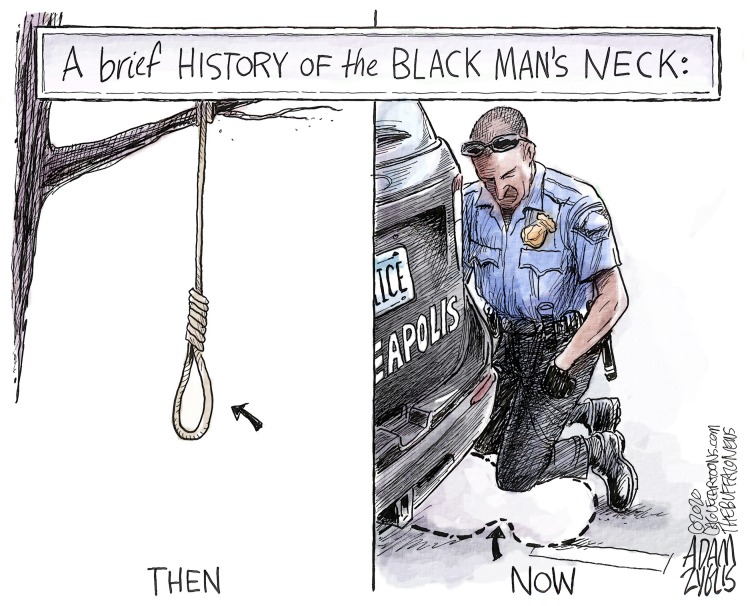Johnson & Johnson has taken over production of its vaccine at a Emergent BioSolutions facility in Baltimore, which was previously manufacturing J&J and AstraZeneca doses.
![AstraZeneca's COVID-19 vaccine has not been authorised for use in the United States yet, but the US government has ordered 300 million doses, some of which have already been made [File: Dhiraj Singh/Bloomberg]](https://www.aljazeera.com/wp-content/uploads/2021/04/370652684.jpg?resize=770%2C513)
![AstraZeneca's COVID-19 vaccine has not been authorised for use in the United States yet, but the US government has ordered 300 million doses, some of which have already been made [File: Dhiraj Singh/Bloomberg]](https://www.aljazeera.com/wp-content/uploads/2021/04/370652684.jpg?resize=770%2C513)
![AstraZeneca's COVID-19 vaccine has not been authorised for use in the United States yet, but the US government has ordered 300 million doses, some of which have already been made [File: Dhiraj Singh/Bloomberg]](https://www.aljazeera.com/wp-content/uploads/2021/04/370652684.jpg?resize=770%2C513)
President Joe Biden’s administration is working with AstraZeneca Plc to find new manufacturing capacity in the U.S. after the company agreed to abandon a Baltimore Covid-19 vaccine plant that will focus exclusively on making doses for Johnson & Johnson.
The talks are the latest development after an error at the Emergent BioSolutions Inc. facility — in which ingredients for the two companies’ vaccines were mixed up — led to a batch of 15 million doses worth of drug substance being spoiled.
J&J announced Saturday that it had taken over production of its vaccine at the Emergent facility, which was manufacturing J&J and AstraZeneca doses. The Department of Health and Human Services worked with AstraZeneca to shift production from the plant.
AstraZeneca’s vaccine hasn’t been authorized for U.S. use yet the government has ordered 300 million of its shots, some of which have already been made. The U.S. loaned 4.2 million of its first doses to Canada and Mexico, which have cleared use of the vaccine.
The manufacturing move was made “to ensure that Johnson & Johnson is the only drug that is being produced at this site, given that the issue was about the cross-contamination of AstraZeneca and Johnson & Johnson,” White House Press Secretary Jen Psaki said at a briefing Monday. “We’re working with AstraZeneca to immediately identify other facilities to continue their domestic manufacture of AstraZeneca drug substance and several options.”
J&J’s single-dose vaccine has been authorized in the U.S., “hence the importance of Johnson & Johnson production continuing to be expedited,” Psaki said.
Timeline Intact
The Baltimore plant hasn’t been authorized for production of J&J’s vaccine, meaning that none of the doses administered and distributed in the U.S. so far were manufactured there or affected by the error. The U.S. still has enough doses to meet its goal of having vaccine supply for all U.S. adults by the end of May, Psaki said.
“We were not betting on these to vaccinate the American public,” she said.
J&J said in a statement Saturday that it “is adding dedicated leaders for operations and quality, and significantly increasing the number of manufacturing, quality and technical operations personnel to work with the company specialists already at Emergent.”
At a briefing Monday, White House Covid adviser Andy Slavitt stressed the importance of that influx of people, along with the plant now producing only one vaccine’s drug substance instead of two. HHS supports both actions, he said.
Moving AstraZeneca from the facility will “eliminate the potential for any cross-contamination,” Slavitt said. “This was a decision that HHS made with Johnson & Johnson and AstraZeneca in complete collaboration, and so AstraZeneca also agreed that this was the right course.”
The decision “says absolutely nothing about our belief one way or the other” as to whether AstraZeneca’s vaccine will eventually be authorized in the U.S., he said. Slavitt said the AstraZeneca vaccine will go through the Food and Drug Administration authorization process “as soon as an application is submitted.”
AstraZeneca has been confronted with growing concerns in the U.K. and Europe over its vaccine, which is the backbone of the U.K.’s successful inoculation campaign. Many countries around the world were relying on AstraZeneca to drive their immunization programs and some are reconsidering.
The U.K. over the weekend confirmed seven people had died from rare blood clots after receiving AstraZeneca’s vaccine and Australia is also investigating a case of clotting, raising questions about the safety of the widely used vaccine. More than 18 million doses have been administered in the U.K. and the regulator there insists the shot is safe.
![Vaccination rates and economic development are diverging widely across the world [File: Lucy Nicholson/Reuters]](https://www.aljazeera.com/wp-content/uploads/2021/04/2021-04-05T212403Z_727519126_RC2XPM99K9CB_RTRMADP_3_HEALTH-CORONAVIRUS-USA.jpg?resize=770%2C513)
 The World Bank estimates that Africa would need about $12bn for COVID-19 vaccines to attain sufficient levels of inoculations to interrupt virus transmission [File: Ebrahim Hamid/AFP]
The World Bank estimates that Africa would need about $12bn for COVID-19 vaccines to attain sufficient levels of inoculations to interrupt virus transmission [File: Ebrahim Hamid/AFP]








